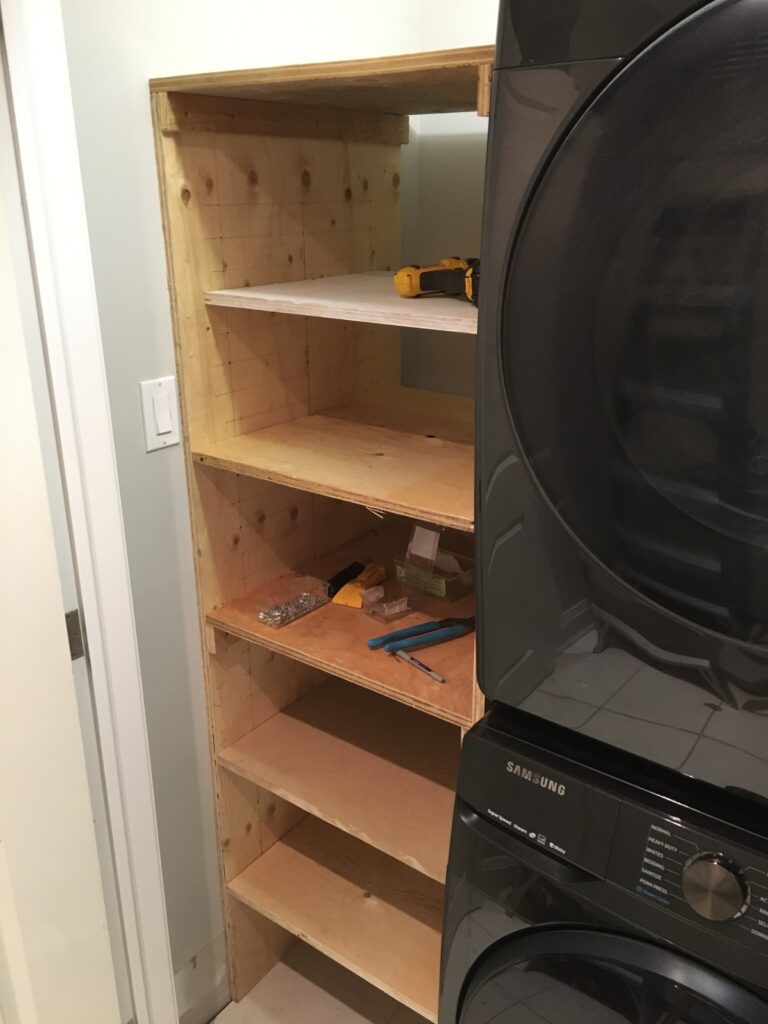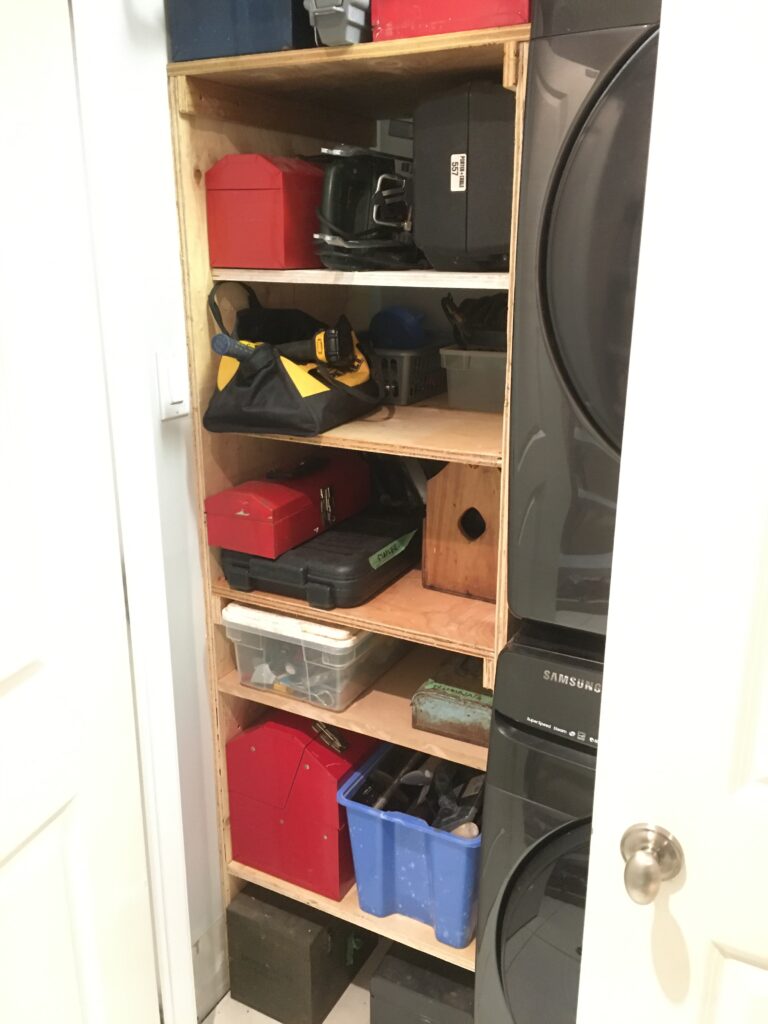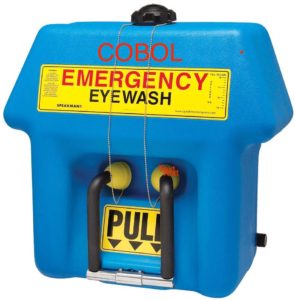I managed to sneak in a day off of work (split over two days), and built a space for all the tools that I used to keep in my double car garage. We’ve been in the new downtown house now for a year, and had most of the old house cleared out except for the garage. You can accumulate a lot of stuff in 20 years of home ownership, and moving from a house with a double car garage to a no-garage house, was quite a challenge. After many panic-demic induced delays, we eventually finished the renos on the old house, and sold it. I’m really enjoying the new neighbourhood, where I can walk to just about everything I need, but there’s a few things that I miss from the old house:
- The garage!
- Parking spaces (6 not including the garage — I won’t miss shovelling that driveway!)
- The pool.
- The hottub.
However, number 1 — the garage, has been the most challenging. We’ve had stuff from the garage all over the house, in the sheds in the back yard, and a whole lot of it on the back deck under a tarp. We replaced our washer and dryer with a stacking unit to maximize the space, and I’ve now built some heavy duty shelves next to it for all the tools and toolboxes:
I’ve drilled three rows of holes, each 2″ apart, so that I can adjust the height of the shelves. I’ve fixed the middle and the top shelf for stability. I also tacked in the shelf on the bottom with a couple screws and should put some sort of fixed back brace, or a bottom piece so that the side supports cannot spread. That will have to be later, since I’m out of wood (I had to scrounge a bit and my top most adjustable shelf is not big enough — so that one is temporary too.)
We may redo the plumbing on the other side of the washer dryer too. We have some long multiple hose runs, one of which leaked at one point, because of a degraded washer. It would be better to put one of those tidy washer/dryer plumbing boxes right in the wall near the washer dryer instead of the current leak ready to happen system. That would allow for eliminating all the too-long hoses, and give us a chance to fully optimize the long laundry closet for storage. That and the opposite storage unit is the closest that we will get to a “garage” in the new house.
In the 2o year accumulation of stuff, I have a whole lot of tools that actually need to go. Some of these were dad’s, and I didn’t have the heart to toss them, but it would be better to find them homes with people that will actively use them. At the bare minimum, some of these excess tools should go to people who actually have storage space to be hoarders, something that we can no longer do. Now that I have things arrayed in an accessible fashion, it’s time for the big sort, and then the purge after the sort.


